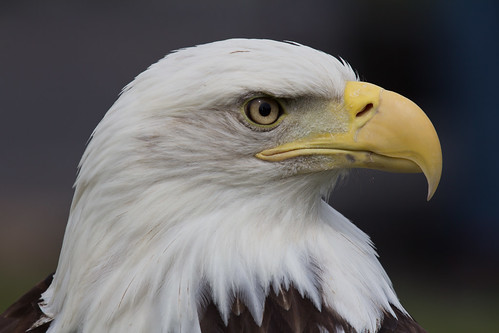Tuesday, October 31, 2017
That "eagle rebirth" video? Poppycock!
Back in 2008, at least a hundred people forwarded an email to me showing a series of photos titled "Rebirth of the Eagle." It was the most patently ridiculous thing I'd ever seen. Now, in 2017, a website (yourdost dot com--I'm not going to link to it) that is supposed to be helping people resolve problems has reissued it as a video. Using magnificent National Geographic footage of various species of eagles and a cheesy, ostensibly inspirational soundtrack, this video was created to show people that essential change can be painful but is still good.
Right from the start, the text makes it clear that not one scientist was involved with the production, saying, “The eagle has the longest lifespan of its species.” Not only does the sentence make no sense whatsoever, but the video shows several species called eagles but which are actually not closely related, including Bald, Golden, and Harpy Eagles. The word poppycock was immediately starting to pop out of my mouth.
According to the video, the eagle can live to be 70 years old if it makes a hard decision. The oldest wild Bald Eagle on record at the US Geological Survey’s bird banding laboratory lived to be 38 years and 1 month; the oldest Golden Eagle lived for 31 years and 8 months. Captive birds can live longer, but the oldest captive Bald Eagle I could find in the records lived to be only 48—more than a couple of decades shorter than 70 years.
Eagles and other birds survive day to day by making thousands of quick decisions. There’s never a point in a bird’s life when it has the luxury to sit down and make a hard decision about whether or not to continue living. While it was contemplating the issue, a predator would come in and kill it.
The video claims that when an eagle is in its 40s, its long and flexible talons can no longer grab prey, and the eagle grows hungry. Based on longevity records, this is of course true because by then the eagle is dead. But as long as an eagle is alive, its talons can grab food—the talons' resting position is closed, so even in death an eagle’s toes are its strongest part.
Then the video says that at that age the eagle’s long sharp beak becomes bent—the video closes in on the bill of an eagle showing the natural curve of the upper bill, a shape necessary throughout life for ripping apart prey. Then the video says that the eagle's "old-aged, heavy wings become stuck to the bird’s chest making it impossible to fly." Eagles molt their flight feathers one by one throughout the year throughout their lives, and molt their body feathers every year. Some feathers may get gooped up from slimy fish or rabbit entrails, but birds of prey preen a lot, keeping each feather in good condition for as long as it lasts. When an eagle can no longer fly and catch prey, it dies, except, apparently, in the alternate universe of this ridiculous video.
According to the video, a 40-year-old eagle has two options—die or go through a painful period of change that lasts 150 days. Now it may well take that long for a complete feather molt, but that’s hardly a painful or debilitating process. So the mystery of what painful process of change the eagle might be going through kept me riveted.
First, that 40-year-old eagle whose aging, heavy wings stuck to its chest making it impossible to fly magically takes wing and flies up to a mountaintop. Now the bird must knock its beak against a rock until it plucks it out. Since this obviously never happens in reality, there is of course no video footage showing an eagle without its beak. After plucking the beak out, the eagle waits for a new beak to grow in, and then it plucks out its talons. Again, of course there is no video footage of this.
Then, the eagle plucks out all its feathers. Since real molt happens just a few feathers at a time, there is of course no photos of any poor literally bald eagles plucked naked, even though regrowing feathers takes supposedly 150 day. After this rebirthing ordeal, the renewed eagle takes off and lives for 30 more years, apparently hiding out from bird banders or the US Geological Survey Bird Banding Laboratory for the rest of its life so no one will ever confirm its longevity.
I guess that in this 2017 world of alternate facts and disinformation, right when people are growing increasingly disconnected from nature, we shouldn't be too surprised that people could believe an eagle could pluck its own beak and talons and live to be 70. But, really, we're now living in a world where real Bald Eagles can be seen in just about every state, even in many urban centers. It's far, far easier for anyone to observe Bald Eagles up close and personal today than in past decades throughout even the longest lifetimes. It's impossible for me to understand why anyone would create a video bearing such utter falsehoods, and even harder to understand why people, including some pretty smart birders, could possibly think this video was true. Why do we waste time looking at videos about eagles rather than spending our time watching living, breathing, eagles and focusing on their honest-to-goodness splendor?
The video was ostensibly created to give people hope, trying to inspire people stuck in bad situations to make hard changes to improve their lives. But grounded in complete falsehoods, all it taught me was that we're not living in an Information Age, but in a Misinformation Age. I hope National Geographic both disavows this utterly inappropriate use of their video footage and sues the pants off the perpetrators.
